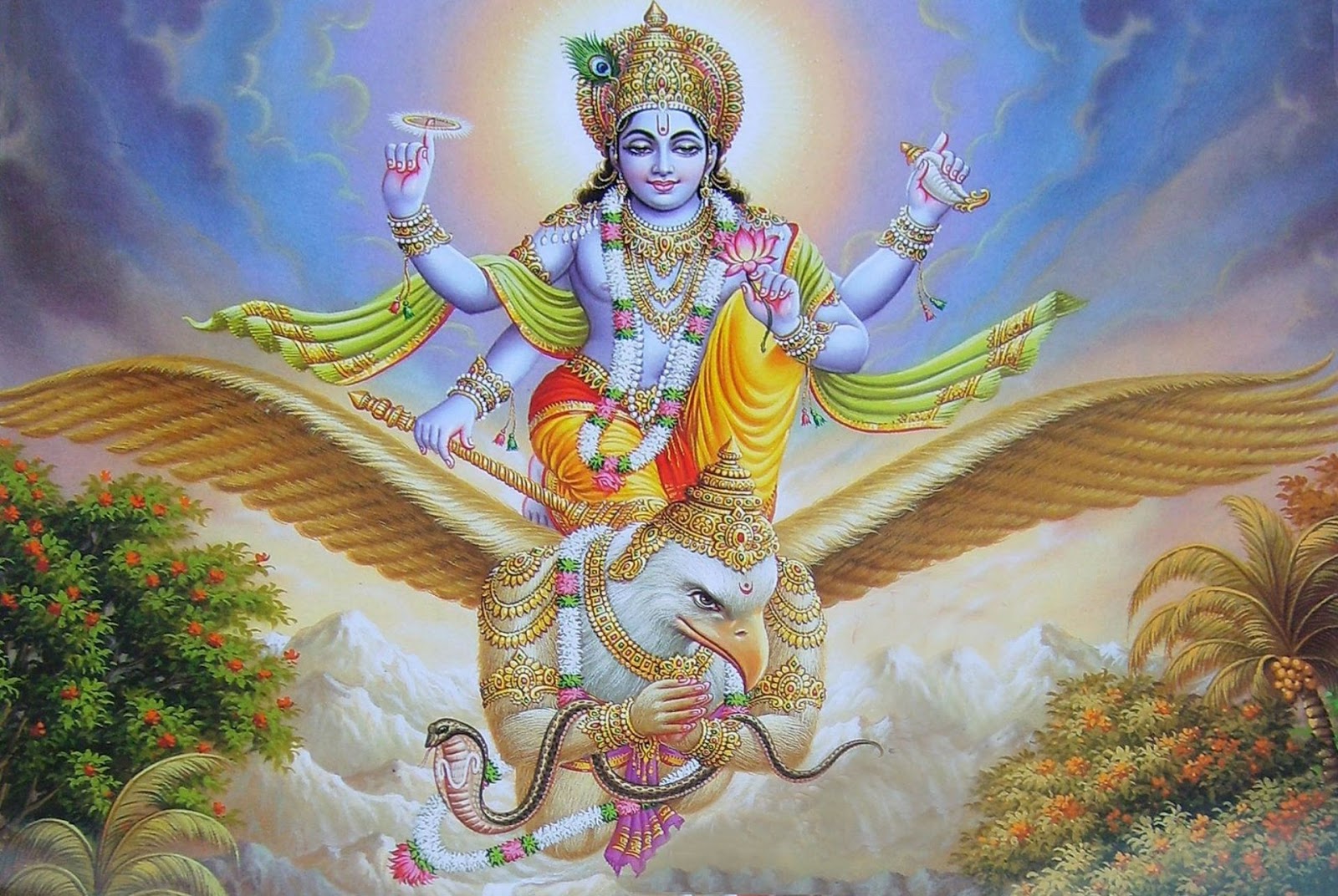The Glory of God : A Summary of the Srimad Bhagavata Mahapuranam : 3.4 - Swami Krishnananda.
-------------------------------------------------------------------------------------------------------------------------
-------------------------------------------------------------------------------------------------------------------------
Saturday, August 7, 2021. 7:05. AM.
Chapter 3 : KAPILA’S INSTRUCTIONS TO DEVAHUTI -4.
----------------------------------------------------------------------------
Now, coming to the point of meditation on God as the Supreme Person, we have to see how we can visualise Him in our presence as a mighty inclusiveness—a Person standing before us in all glory and perfection. We require a little bit of imagination and the power of will to concentrate like this.
We say that God created the world. The Bhagavata does not deny this fact that God created the world because the mind of the human individual cannot but accept that God created the world. We cannot violate our own sense of feeling. The Bhagavata does not expect us to violate our own feelings and acceptances, and takes them as they are. And like a good schoolmaster taking the student from the level of his own standard, the Bhagavata gradually takes us from our own standard of incompleteness and finitude, and the needs incumbent upon this finitude, to another level.
All the parts of this personality are equally distributed systematically, beautifully, like an artistic presentation. We have no occasion in the world to see beautiful things in such a complete manner. We have a sentimental perception of beauty which is valid for some time, but it does not persist for all time. Nothing that engulfs us in its beauty for all time, under any circumstance, is available in this world. That is available only in God, who is Supreme Beauty. Inasmuch as we are not accustomed to perceive such beauty in the world, we find it hard to conceive God in that perfection. This is why there is struggle in the beginning of the attempt at meditation. The mind gets revolted by the concept of perfection.
The beauty should be perfect, as incomplete, imperfect beauty cannot attract. But we have not seen perfect beauty anywhere in the world. Every beauty is imperfect; it has a flaw behind it, which we always ignore for the time being, for practical purposes; and that which is ignored will come up one day or the other and tell us that our concept of the beautiful object is not complete. But here, it is not like that. Nothing is hidden; it is open beauty.
Thus, Maharishi Kapila takes us gradually from the various parts of the Supreme Person to every other part. We can look at His head, His eyes, His nose, His hands, His chest, His whole person. What do we see there? We see the whole cosmos embedded in Him. We are not looking at an extra-cosmic Person standing on the top of the world, with His feet on the Earth as if the Earth has no connection with Him. This Mighty Person, called the Visvarupa, includes all the creation that He is supposed to have made. In the Visvarupa-darsana we find all the worlds rolled up in one mass. Ihaikasthaṁ jagat kṛtsnaṁ pasyādya sacarācaram (B.G. 11.7): “You can see the whole universe here,” says Bhagavan in his Visvarupa.
Hence, the mind cannot feel the necessity to get distracted or to go in some other direction. We may not feel at that time, “I am contemplating an extra-cosmic Supreme Person seated in heaven, and I have left the Earth which also seems to have some value for me.” These values which are supposed to be in this world are included in this Supreme Magnificence, because God is not merely a transcendent creator, He is also an immanent material out of which the whole universe is created. Abhinna-nimitta-upadana-karanatva is the nature of God—that is, the unity of Being is the material cause as well the instrumental cause of creation. A potter is only the instrumental cause, and not the material cause, of the pot because the material is the earth, the clay, out of which it is made. But here, the material cannot be outside God. The timber, the beams and the support of this world are made up of God’s Person Himself. In the great Skambha Sukta in the Atharva Veda, we have a question: What is the timber out of which the house of God is built? What are its beams; what are its pillars; what is the structure? The answer is that the pillar, the beams and the timber that are used are made of God only. That is the answer of this great Skambha Sukta: the structural pattern of God is the substance of the world also.
To be continued ....
========================================================================






Comments
Post a Comment